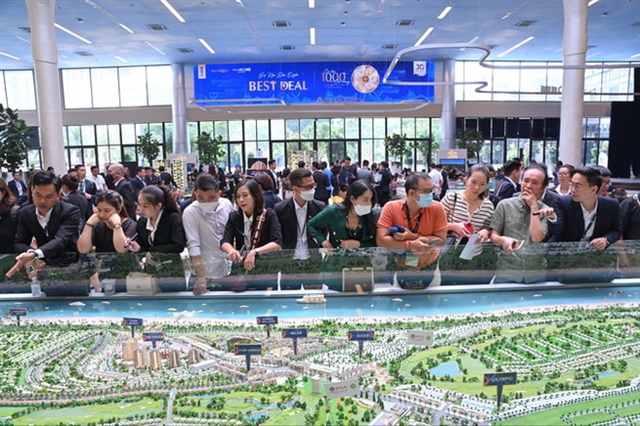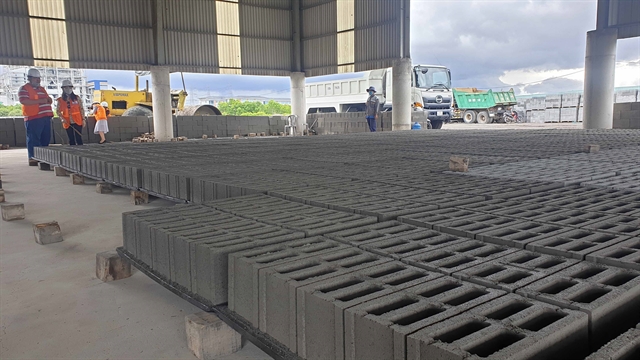 Economy
Economy

 |
| Unbaked tiles made from fly ash, a product created by Duyên Hải DGM Green Materials Company Limited. — VNA/VNS Photo |
HÀ NỘI — In the global trend of sustainable and green growth, eco-friendly building materials have become a lifesaver for the construction industry.
Eco-friendly building materials help reduce electricity consumption and greenhouse gas emissions while simultaneously enhancing living space.
The Ministry of Construction reported that construction projects consume around 40 per cent of energy resources, which are responsible for 50 per cent of emissions. They also produce 33 per cent of carbon emissions and use 40 per cent of construction solid water.
In the first half of 2023, the construction industry's growth rate increased by 4.47 per cent year-on-year, raising the energy demand for the sector. During the period, Việt Nam totalled 898 urban areas.
Therefore, developing green materials is becoming the primary objective of the Vietnamese construction materials manufacturing industry to attain the goal of net zero emissions by 2050. The Ministry of Construction, in particular, is assigned to cut 74.3 million tonnes of CO2 emissions.
Inevitable materials
Nguyễn Quang Hiệp, deputy director of the Construction Materials Department under the Ministry of Construction, highlighted the benefits of green materials such as easy recycling, reducing greenhouse gas emissions, contributing against climate change, and saving energy.
"More importantly, eco-friendly materials help promote a cleaner environment and support the sustainable development of the construction industry and other businesses," he added.
Given its significance, the Ministry of Construction has developed the Việt Nam Construction Materials Development Strategy for the 2021-30 period, with a vision to 2050, and advised the Government to enact it.
The strategy completely eliminates construction material production technology that consumes a lot of resources and pollutes the environment.
Preferential scheme
Even though Việt Nam has boosted the development of green materials, they are not widely used due to barriers in current legal and technical issues.
Moreover, Việt Nam's ability and technology to create green materials are limited while prices of the products are still expensive, making them difficult to compete with other materials.
To solve these problems, Hiệp suggested that Việt Nam have specific regulations and policies to support the research and development in the production of green materials.
Manufacturing businesses also need to seek solutions to further reduce the production cost of green materials so that they are able to compete with traditional materials that have similar features.
Nguyễn Dương Trúc Linh, a representative of Phương Nam Soundproofing Insulation Company, said that in the future, the Ministry of Construction and other related agencies must issue more specific solutions and guidelines to attract business participation towards sustainable green buildings.
"The Ministry of Construction needs to have a set of criteria for design and construction guidance for green buildings, or a toolkit that directly guides and provides specific and practical guidance for all investors in the direction of building sustainable projects," Trúc Linh recommended. — VNS




